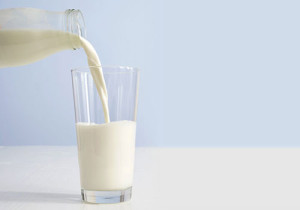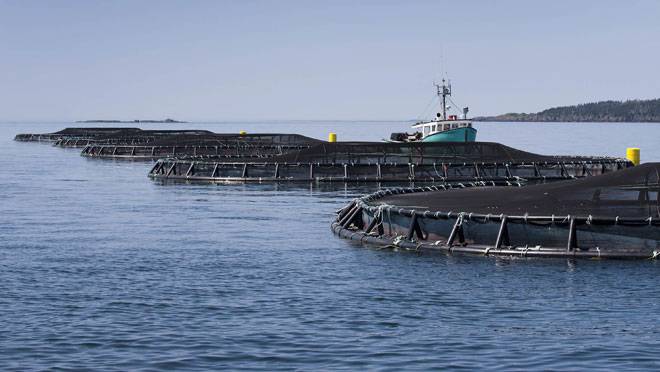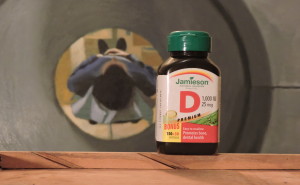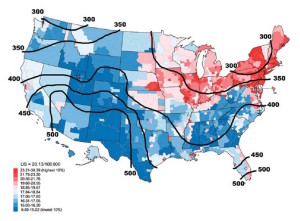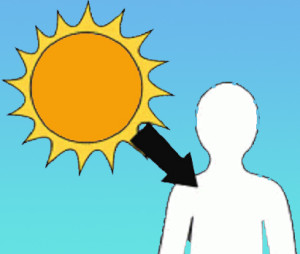Will This Doctor Change Diets & Reform Medicine?
His plan is ambitious and controversial. Dr. William Davis, American cardiologist and author of Wheat Belly, is touring Canada and the United States, urging people to rethink the way they eat and safeguard their health. Last night he spoke in Halifax from Spatz Auditorium in Citadel High School to a receptive audience of 200 people, most of them thin and well-informed on food matters. Dr. Davis’s lecture summarized key ideas from his best selling book Wheat Belly, starting with the notion of self-empowerment–looking after yourself through good nutrition and sensible food habits instead of relying on drugs and medical interventions. The lecture argues that the consumption of wheat and related wheat products has led to a national health crisis and distorted our outlook on medicine. Dr. Davis also spoke of his health institute and latest collaborations with young filmmakers.
For me, the most interesting part of the evening was the question and answer session, moderated by Nancy Reagan. Responding to a variety of questions, Dr. Davis displayed quickness of mind, as well as a kind, patient manner and deep concern for others.
“No one would be in this room right now,” Dr. Davis stressed, “if all you wanted was better health. Everyone here wants ideal health. You all want to feel the best that you can possibly feel.”
Dr. Davis makes a distinction between two kinds of medicine, the traditional medicine that treats infections and broken bones, and modern medicine which treats chronic diseases brought about by poor nutrition and environmental factors. Dr. Davis believes that treatments for chronic conditions such as obesity, diabetes and heart disease should start with nutrition and not with drugs and medical interventions. The health system needs to be reformed, along with a substantial effort to re-educate the general public.
Dr. Davis was asked about sugar. Isn’t it as bad or worse than wheat in its effect on people’s health? Dr. Davis’s answer surprised many in the audience. “The gliadin in wheat,” he said, “is a powerful addictive substance. Gliadin induces cravings for sweet, makes us feel always hungry, dulls our taste senses and brings on brain fog and depression. Cut out the gliadin and you will no longer crave sweet. You will no longer feel like you need to eat a Snicker’s bar, and if you do eat a Snicker’s bar, you’ll find it tastes too sweet, sickeningly sweet, because your taste buds will no longer be impaired.”
“The other thing about sugar, if you eat candy or jelly beans, no one pretends that it’s good for you. But with wheat, it’s the base of the food pyramid. Food Canada, the FDA, and the Diabetes Association promote wheat as something that’s healthy and beneficial.” Dr. Davis suggested a simple test anyone can try at home using a blood testing kit sold at any drugstore. “For this test, take a blood sugar reading two hours before you eat. Most people will get a reading of around 5. Then eat two sluices of bread, wait an hour, and take another reading. For most people, their blood sugar will spike up to 9 or 10. This is a dangerous diabetic level! Yet the Diabetes Association endorses bread as a healthy form of nutrition. It’s not. So to answer your question: cut out wheat and your sugar problem will disappear.”
Dr. Davis was flooded with questions along these lines: “Sure, I can cut out bread, but what about oats, what about quinoa, what about rice, what about beer?” It seems, there’s always one food item that’s hardest to let go of. Dr. Davis’s answer never wavers: “Rice isn’t as bad as wheat, but that doesn’t mean it’s healthy. All ‘seeds of grasses’ are genetically similar; all share dangerous elements that over time will impair your health and lead to chronic disease.”
Dr. Davis was asked, “If people around the world all removed grain and rice products from their diets, then wouldn’t people starve? What are the implications for combating the world’s most pressing hunger issues?” Dr. Davis acknowledged that this is indeed a difficult question. “If your view is too short-term, then the question cannot be properly answered. You have to appreciate the magnitude of the problem. The introduction of grains into the human diet (over the last 10,000 years) was a terrible mistake. The mistake has escalated in the last 50 years with the development of mutated grains. A mistake like this is not solved by Tuesday, it’s not corrected in a week or a year’s time. It may well take 100 to 200 years to fix this problem.”
As background for this blog, I read many reviews and Internet articles on Dr. Davis and was amazed at the invective and defensive arguments advanced by those who feel threatened by his message. My own view is this: if you’re healthy and happy, you may not need to change your diet, but if you’re not as healthy as you’d like to be, or if you suffer from a chronic condition that the medical community are unable to cure, then what have you got to lose? My wife and I have given up bread for three months now and the health benefits have been substantial, well worth our effort to make the change. To get a sense of Dr. Davis’s message, I recommend the following videos. In the first 10 minute clip, Dr. Davis speaks with Julie Daniluk about his own personal journey to health, problems and misconceptions he had to overcome, and the lessons he’s learned from treating patients in his own practice. In the second 60 minute clip, Dr. Davis delivers his full lecture on the dangers of wheat in people’s diets.


